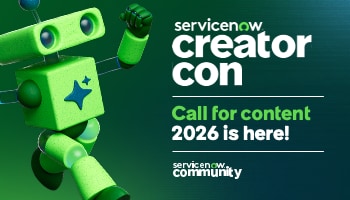
Mark Bodman

ServiceNow Employee
Options
- Subscribe to RSS Feed
- Mark as New
- Mark as Read
- Bookmark
- Subscribe
- Printer Friendly Page
- Report Inappropriate Content
03-09-2022
11:16 AM
Here is the latest video that Scott and I recorded to explain the Technical Service in CSDM. We deep-dive into using the Service Builder to create and manage them, use of the Dynamic CI Groups, and how the CSDM Data Synchronization feature should be used when defining them.
Look forward to your feedback and discussion. Enjoy!
- 5,189 Views
8 Comments
You must be a registered user to add a comment. If you've already registered, sign in. Otherwise, register and sign in.
